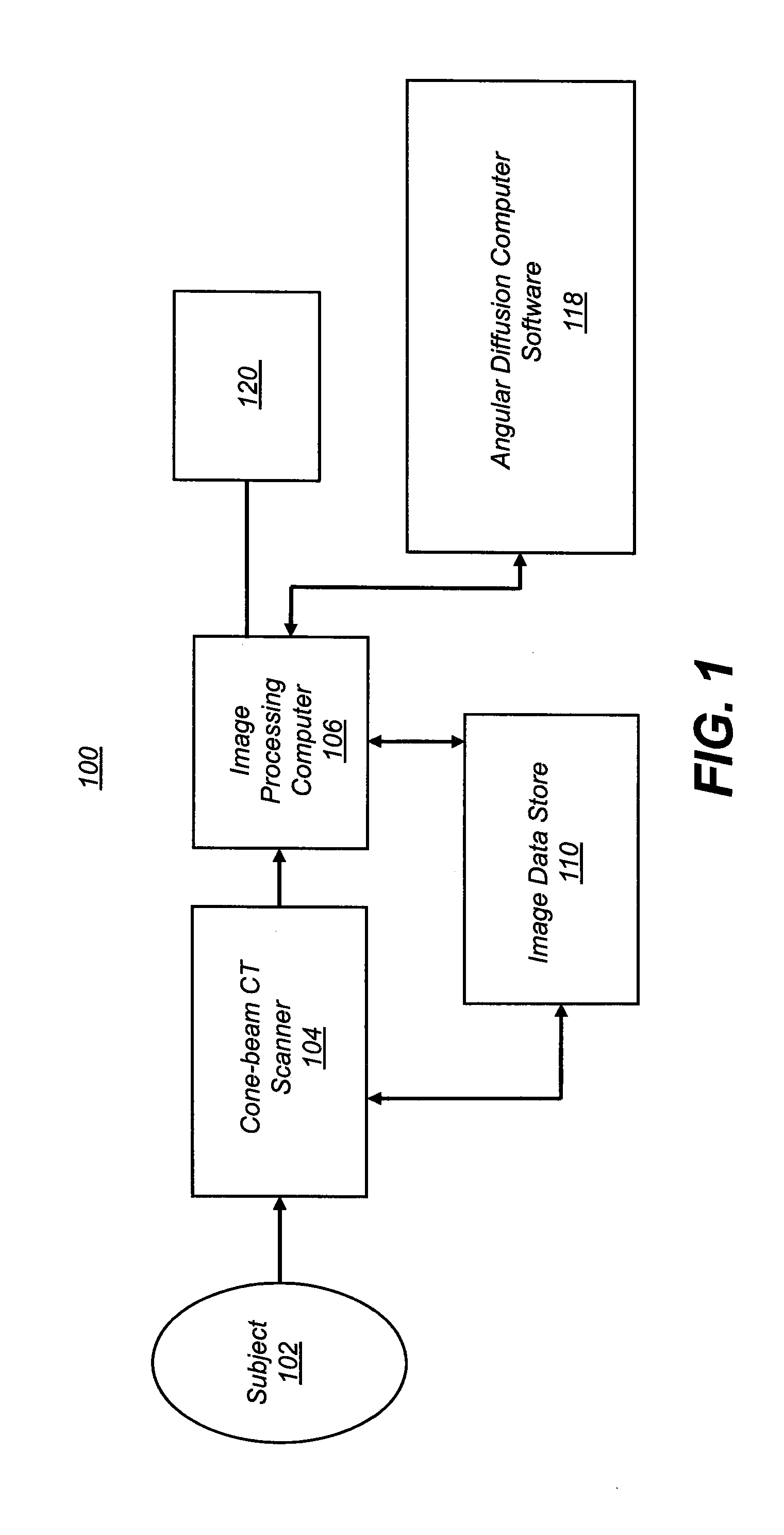Noise suppression in cone beam ct projection data
a cone beam and projection data technology, applied in the field of diagnostic imaging, can solve the problems of increasing the overall acquisition time, delivering a higher dose of x-ray to the patient, and affecting many automated image processing and analysis tasks, so as to reduce the tangential blur in image reconstruction and suppress the noise
- Summary
- Abstract
- Description
- Claims
- Application Information
AI Technical Summary
Benefits of technology
Problems solved by technology
Method used
Image
Examples
Embodiment Construction
[0039]The following is a detailed description of the preferred embodiments of the invention, reference being made to the figures in which the same reference numerals identify the same elements of structure in each of the figures.
[0040]The term “image element” or “digital image element” refers to a pixel (from “picture element” and commonly used for an image with two dimensions) or to a voxel (from “volume picture element” for an image of three or more dimensions). In CBCT imaging, the two types of digital image elements are closely related: 3-D voxels are formed using data obtained from pixels that were obtained in one or more 2-D projections. The terms “in-plane” and “out-of-plane” relate to the arrangement of image element data as obtained from the planar 2-D digital detector and used to form 3-D voxels.
[0041]The term “region” is used in the present application to describe an area of a 2-D image or, correspondingly, a volume of a 3-D or 4-D or higher image that contains a grouping...
PUM
 Login to View More
Login to View More Abstract
Description
Claims
Application Information
 Login to View More
Login to View More - R&D
- Intellectual Property
- Life Sciences
- Materials
- Tech Scout
- Unparalleled Data Quality
- Higher Quality Content
- 60% Fewer Hallucinations
Browse by: Latest US Patents, China's latest patents, Technical Efficacy Thesaurus, Application Domain, Technology Topic, Popular Technical Reports.
© 2025 PatSnap. All rights reserved.Legal|Privacy policy|Modern Slavery Act Transparency Statement|Sitemap|About US| Contact US: help@patsnap.com



